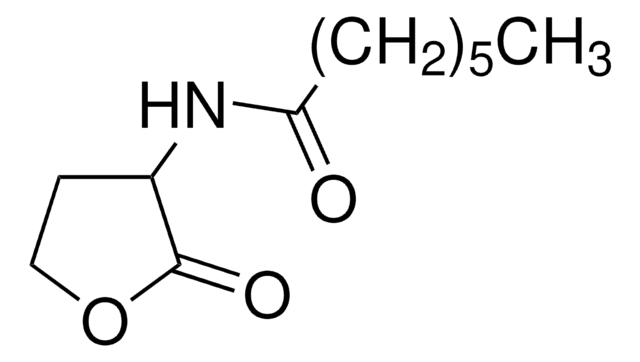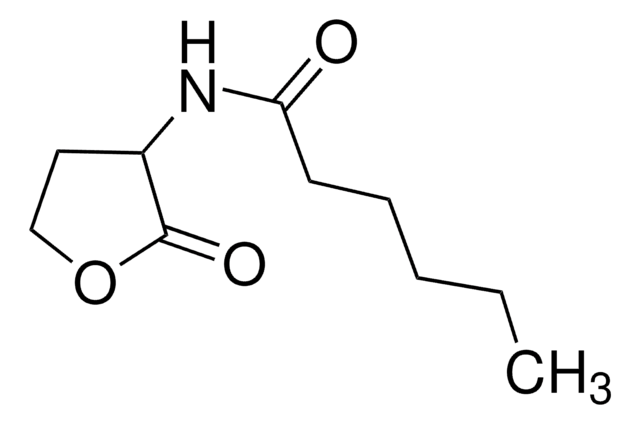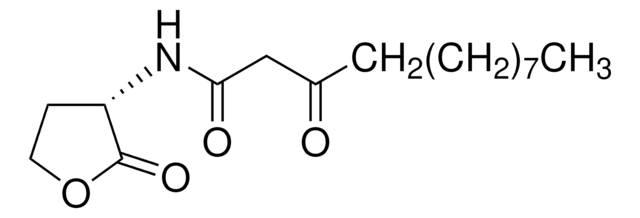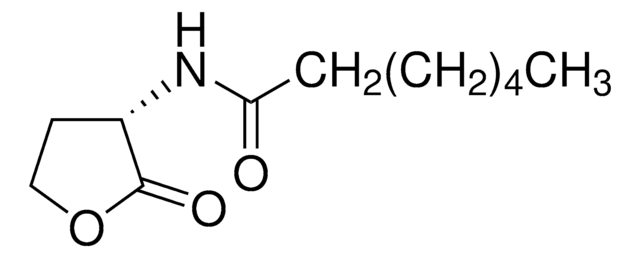10937
N-Tetradecanoyl-DL-homoserine lactone
≥97.0% (HPLC)
Sinônimo(s):
N-Myristoyl-DL-homoserine lactone
Selecione um tamanho
Selecione um tamanho
About This Item
Produtos recomendados
Nome do produto
N-Tetradecanoyl-DL-homoserine lactone, ≥97.0% (HPLC)
Ensaio
≥97.0% (HPLC)
Formulário
powder
cor
white to slightly yellow
aplicação(ões)
cell analysis
temperatura de armazenamento
2-8°C
cadeia de caracteres SMILES
CCCCCCCCCCCCCC(=O)NC1CCOC1=O
InChI
1S/C18H33NO3/c1-2-3-4-5-6-7-8-9-10-11-12-13-17(20)19-16-14-15-22-18(16)21/h16H,2-15H2,1H3,(H,19,20)
chave InChI
ZQAYHOXXVBVXPZ-UHFFFAOYSA-N
Aplicação
Ações bioquímicas/fisiológicas
Código de classe de armazenamento
11 - Combustible Solids
Classe de risco de água (WGK)
WGK 3
Ponto de fulgor (°F)
Not applicable
Ponto de fulgor (°C)
Not applicable
Equipamento de proteção individual
Eyeshields, Gloves, type N95 (US)
Escolha uma das versões mais recentes:
Certificados de análise (COA)
Não está vendo a versão correta?
Se precisar de uma versão específica, você pode procurar um certificado específico pelo número do lote ou da remessa.
Já possui este produto?
Encontre a documentação dos produtos que você adquiriu recentemente na biblioteca de documentos.
Os clientes também visualizaram
Active Filters
Nossa equipe de cientistas tem experiência em todas as áreas de pesquisa, incluindo Life Sciences, ciência de materiais, síntese química, cromatografia, química analítica e muitas outras.
Entre em contato com a assistência técnica















